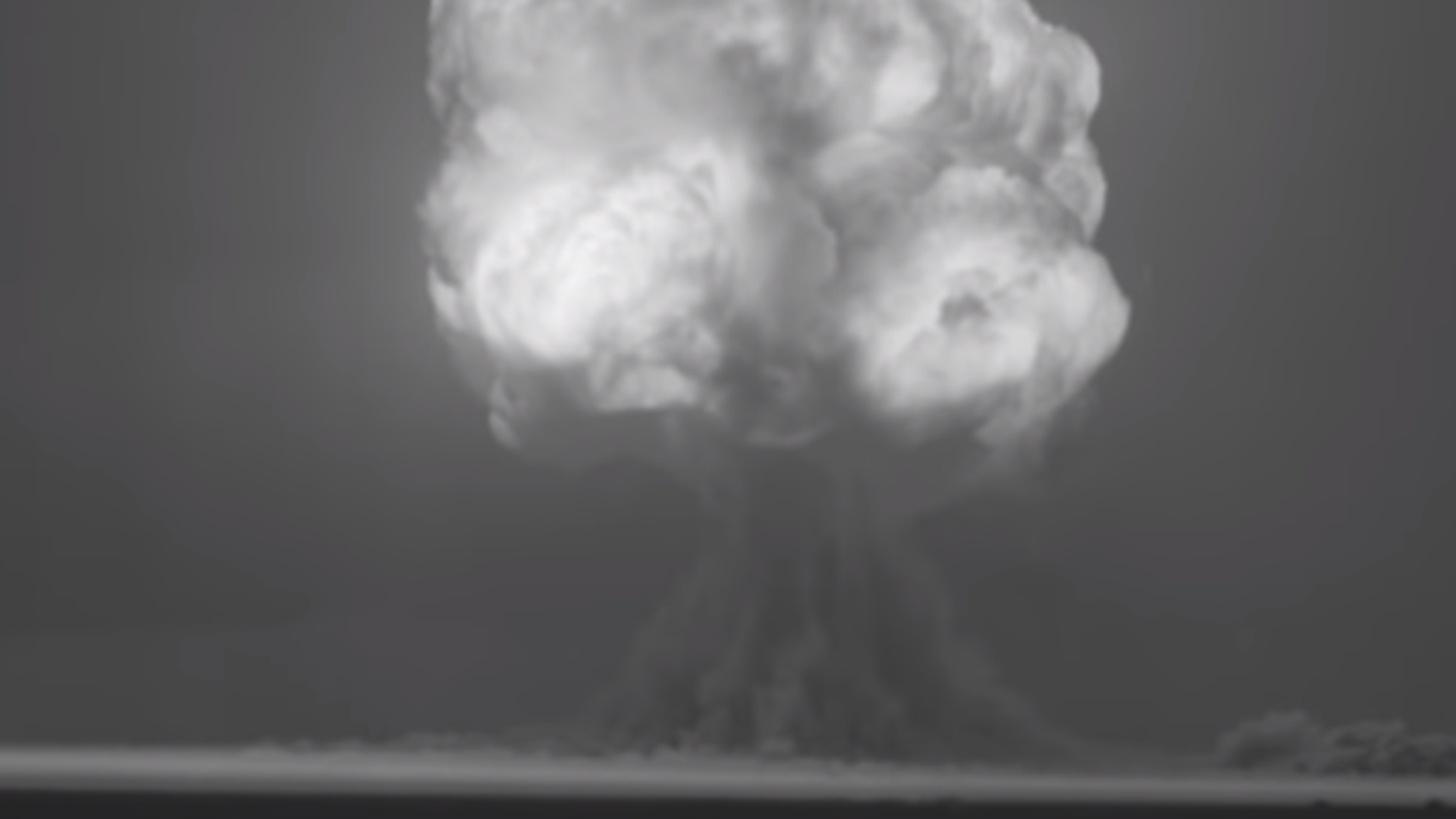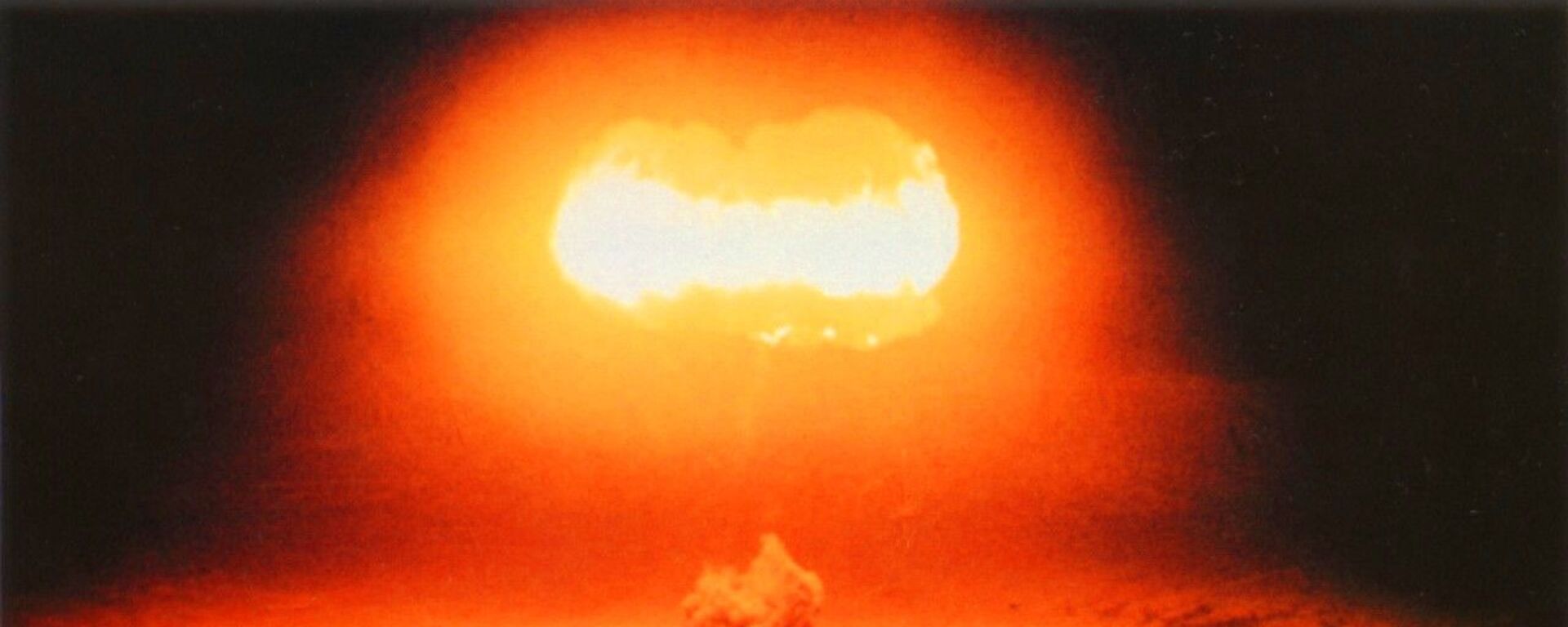https://sputnikglobe.com/20230809/declassified-files-reveal-manhattan-project-chief-hid-radioactivity-dangers-from-public-1112495432.html
Declassified Files Reveal Manhattan Project Chief Hid Radioactivity Dangers From Public
Declassified Files Reveal Manhattan Project Chief Hid Radioactivity Dangers From Public
Sputnik International
A research group specializing in once-secret files has published a new dossier revealing that the director of the top secret effort to build an atomic bomb lied to lawmakers and the public about the dangers posed by radioactivity.
2023-08-09T21:35+0000
2023-08-09T21:35+0000
2023-08-09T21:34+0000
americas
manhattan project
nuclear bomb
radioactive materials
oppenheimer
nuclear weapons
https://cdn1.img.sputnikglobe.com/img/107304/68/1073046825_0:210:1502:1055_1920x0_80_0_0_3c58f7babaa301cfe4f99752e26f6cb6.png
The files were released on Monday by the National Security Archive, a private research organization based at George Washington University in Washington, DC.The findings show US Army Gen. Leslie Groves, who oversaw the Manhattan Project, lied to Congress and the American public about the harmful effects of radiation exposure. They also reveal J. Robert Oppenheimer, the director of the Los Alamos lab at the center of the project and the subject of a recently released major motion film, knew about Groves’ deception and did nothing to correct it.At first, Groves claimed the radioactive materials were harmless out of simple ignorance, but later it became deliberate deception, the files show.The day prior, Groves told reporters that radiation had caused no deaths, dismissing reports in Asian newspapers as “propaganda.” While the Imperial Japanese government had announced its surrender on August 15, the war was not formally concluded until the peace treaty was signed on September 2.Later reports from November of that year described further cases of radiation sickness among Japanese victims. One report by the Manhattan Project’s chief medical officer, Stafford Warren, dated November 27 described thousands of cases in Japanese hospitals that were consistent with the effects of radiation poisoning, which US scientists had already closely documented up-close after several of their own suffered catastrophic irradiation and died while developing the atom bomb.Groves acknowledged many had died from radiation exposure, but claimed it was from the time the bomb went off and not from fallout. In a shutter-inducing moment of the testimony, he claimed radiation victims would die “without undue suffering. In fact, they say it is a very pleasant way to die.”Other documents show that while the atom bomb was still in development, the scientists already feared a toxic “cloud” of “radioactive dust” could be stirred up by the weapon’s explosion and loiter in the air for “hours after the detonation.” They urged Groves to evacuate the test site prior to the Trinity blast that July, but Groves dismissed their fears, accusing them of being “a Hearst propagandist” - that is, a writer for a notorious muckraking newspaper.Five days after the Trinity test, on July 21, 1945, Warren wrote in a document included in the dossier that “the dust outfall from the various portions of the cloud was potentially a very serious hazard over a band almost 30 miles wide extending almost 90 miles northeast of the site,” adding that there was still “a tremendous amount of radioactive dust floating in the air.”However, nine days later, Groves told US Army Chief of Staff Gen. George Marshall that “no damaging effects are anticipated on the ground from radioactive materials” by using the weapon.
https://sputnikglobe.com/20210423/us-honey-still-contains-radioactive-fallout-from-1950s-nuclear-weapons-tests-study-finds-1082703522.html
https://sputnikglobe.com/20230806/hiroshima-nuclear-bombing-1112421762.html
americas
Sputnik International
feedback@sputniknews.com
+74956456601
MIA „Rossiya Segodnya“
2023
News
en_EN
Sputnik International
feedback@sputniknews.com
+74956456601
MIA „Rossiya Segodnya“
Sputnik International
feedback@sputniknews.com
+74956456601
MIA „Rossiya Segodnya“
manhattan project; robert oppenheimer; nuclear bombs; nagasaki; hiroshima
manhattan project; robert oppenheimer; nuclear bombs; nagasaki; hiroshima
Declassified Files Reveal Manhattan Project Chief Hid Radioactivity Dangers From Public
A research group specializing in once-secret files has published a new dossier revealing that the director of the United States’ top secret effort to build an atomic bomb lied to lawmakers and the public about the dangers posed by radioactive materials.
The files were
released on Monday by the National Security Archive, a private research organization based at George Washington University in Washington, DC.
The findings show US Army Gen. Leslie Groves, who oversaw the Manhattan Project, lied to Congress and the American public about the harmful effects of radiation exposure. They also reveal J. Robert Oppenheimer, the director of the Los Alamos lab at the center of the project and the subject of a recently released major motion film, knew about Groves’ deception and did nothing to correct it.
At first, Groves claimed the radioactive materials were harmless out of simple ignorance, but later it became deliberate deception, the files show.
One file in the dossier is dated September 1, 1945 - about three weeks after the second of two atom bombs was dropped on Japan, killing more than 110,000 people and bringing an abrupt end to the Second World War.
Titled “Calculated Biological Effects of Atomic Explosion in Hiroshima and Nagasaki,” the two Japanese cities targeted, the memo revealed some of the bomb victims had not died from the air blast or the heat of the explosion, but from poisoning caused by radioactive fallout. Those victims died not when the bombs exploded, but days or weeks later.
The day prior, Groves told reporters that radiation had caused no deaths, dismissing reports in Asian newspapers as “propaganda.” While the Imperial Japanese government had announced its surrender on August 15, the war was not formally concluded until the peace treaty was signed on September 2.
In another document, George Kistiakowsky, the Los Alamos scientist who authored the September 1 report, sent a memo to Oppenheimer that same day, revealing that he hesitated to pass the study along because of Groves’ press comments.
Later reports from November of that year described further cases of radiation sickness among Japanese victims. One report by the Manhattan Project’s chief medical officer, Stafford Warren,
dated November 27 described thousands of cases in Japanese hospitals that were consistent with the effects of radiation poisoning, which US scientists had already closely documented up-close after several of their own
suffered catastrophic irradiation and died while developing the atom bomb.
The report was addressed to Groves, who three days later,
told the Senate Special Committee on Atomic Energy when asked about “radioactive residue” in Hiroshima and Nagasaki: “There is none. That is a very positive ‘none.’”
Groves acknowledged many had died from radiation exposure, but claimed it was from the time the bomb went off and not from fallout. In a shutter-inducing moment of the testimony, he claimed radiation victims would die “without undue suffering. In fact, they say it is a very pleasant way to die.”
Other documents show that while the atom bomb was still in development, the scientists already feared a toxic “cloud” of “radioactive dust” could be stirred up by the weapon’s explosion and loiter in the air for “hours after the detonation.” They urged Groves to evacuate the test site prior to the Trinity blast that July, but Groves dismissed their fears, accusing them of being “a Hearst propagandist” - that is, a writer for a notorious muckraking newspaper.
Indeed, the July 16, 1945, Trinity blast sent just such a toxic cloud across the New Mexico Jornada del Muerto plains, dousing communities of Hispanic and Apache farmers who have become known as the Tularosa Downwinders.
They have suffered high rates of radiation-related illnesses, such as leukemia and other forms of cancer, and had to fight the federal government for compensation.
Five days after the Trinity test, on July 21, 1945, Warren wrote in a document included in the dossier that “the dust outfall from the various portions of the cloud was potentially a very serious hazard over a band almost 30 miles wide extending almost 90 miles northeast of the site,” adding that there was still “a tremendous amount of radioactive dust floating in the air.”
However, nine days later, Groves told US Army Chief of Staff Gen. George Marshall that “no damaging effects are anticipated on the ground from radioactive materials” by using the weapon.




